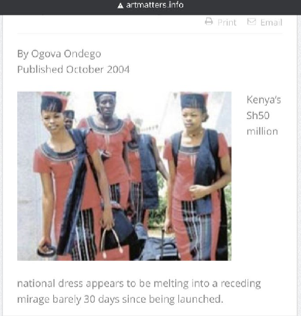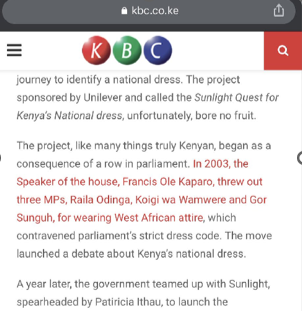By admin
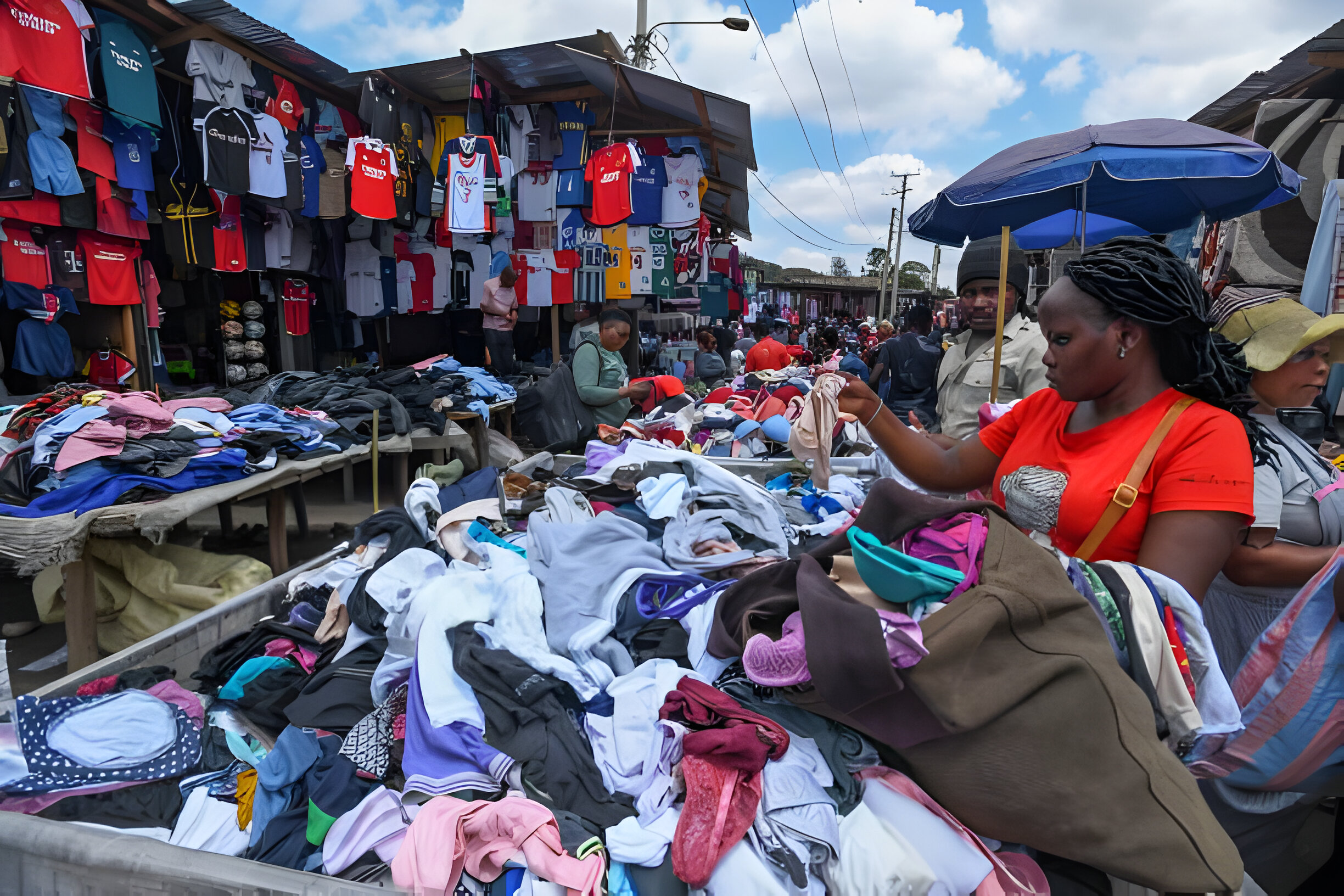
All this #Mitumba talk reminded me of when I tried a Mitumba
supplier business 😂😂😂
I used to spend weeks freezing in Birmingham negotiating
bales from Polish, Italian and Pakistani traders😆
A thread on why we need to REDUCE Mitumba imports. And to
boost local industry 🧵
So anyway, here’s what I learned after spending time in the UK’s Used Clothes supply chain
as an aspiring Auntie wa Harrier. 😆
Without the courage to brave #Gikomba.
And as a fashion/textiles sector policy wonk working the ESG/Sustainability/Climate
Change nexus.
To analyse Mitumba, it’s important to factor:
Locally, China’s/Asia’s influence is evident.
Malls in CBD/ Eastleigh etc, sell affordable new /boutique clothes/shoes.
Even at Gikomba/Toi/Kamukunji, there is someone selling new goods next to the mitumba
guy.
Arsenal T-shirts, Adibas shoes, cookware, GUGGI belts😂…
*ASIDE: On these new clothes…part of what makes them cheap is that where they are made.
More Western Governments are moving to limit products made in places like Xianjing
(forced labour, ESG issues etc).
And more of these products are ending up in countries with lax policies.
So, unlike in the past when Africa imported the bulk of Mitumba from US/Europe, today,
cheap Chinese fast fashion makes up the BULK of Mitumba.
In the past, we had fast fashion brands (made in China for Global North markets). Topshop,
H&M, Zara, M&S, Primark, New Look, Asos etc.
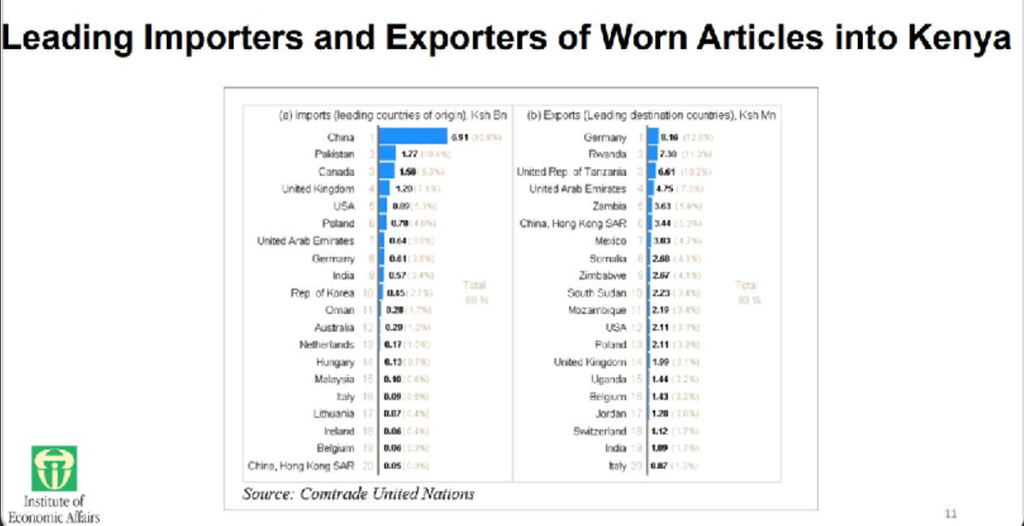
Today, our Mitumba features brands like Shein, Fashion Nova, Pretty Little Thing, Boohoo, Nasty Gal, Romwe etc.
Influencers do a #SheinHaul today, and dump it for Africa a day later.
They’re so cheap that even for returns, it’s still cheaper to throw than return to inventory. Now, here’s how The Global Used Goods supply chain works:
The chain is made up of collectors, sorters, graders, resellers, transporters etc. Most of the good stuff is gone before it enters this supply chain.
First off, wealthy people rarely give things for free. That’s why they’re rich 🤪.
They sell to bougie-ass, expensive AF, thrift/vintage/ pre-loved stores. Or luxury consignment platforms like RealReal, Net-A-Porter.
Or Kardashian Kloset where Kris Jenner reduces price by $1😂 What gets to sorting is graded.
The higher the grade, the more expensive.
Cream/Crème de la Crème – New, tagged, expensive labels. For EU and UK resellers & thrifters.
Grade A, B & C – Ranging from good condition, to unwashed marathon T-shirts, and Pornhub bedsheets 😂
What we receive in Africa is Export Bales/Rummage.
A lot of B&C, with some Grade A thrown in (Ergo the Prada bag you found in Toi) When this gets to Kenya, traders sort the different quality.
The good condition/top labels is what we know as “Camera”. Most profit is made here.
BUT, there is more to the proverbial mix.
Because of the rise in re-use, and environmental consciousness in the West, most of the high-quality, durable items are removed from goods destined for Africa.
And so, our #Mitumba is largely, cheap Chinese products, and grade C items. Traders will try to sell it BUT the bulk of it is unsellable.
Speak to any Gikomba trader and they will tell you how much junk is in the bales they receive.
In the end, they have no choice but to dump it. Bales upon bales of junk.
Where does it end up?
In landfills and dumpsite across Africa.
In Dandora dumpsite. In Ghana. In Nairobi River.
It is, for all intents and purposes, dangerously out of control.
And, unfortunately, most of us are quite removed from this dire reality.
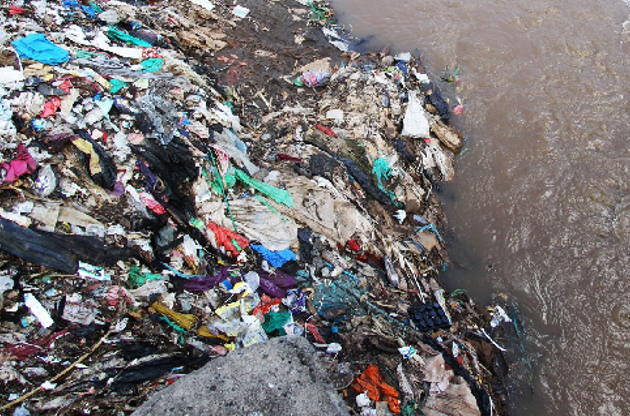
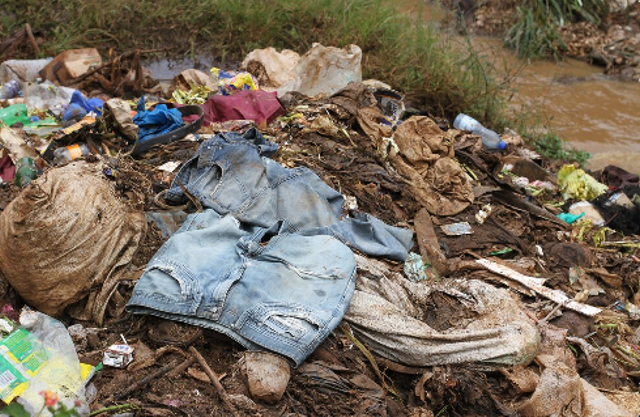
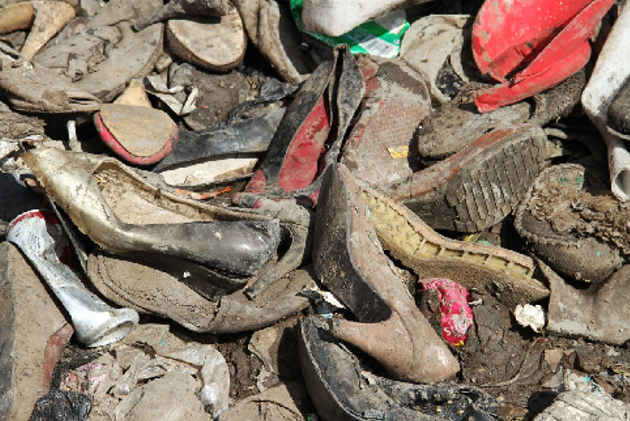
THIS is a real problem.
As it stands today, Africa’s #Mitumba is simply the world’s dumping ground for fast fashion. It is NOT sustainable or circularity or environmentally conscious.
It IS #greenwash.
It IS a dignity and PUBLIC HEALTH issue for Africa.
Which brings me to my first policy intervention for #Mitumba:
– We need to AGGRESSIVELY LIMIT what gets into the country. (The types of items, the quality & the quantity)
Resellable grades ✅
Help traders aggregate bales into containers ✅ Ban items that can be made locally✅
Now, the local textiles & apparels industry is another whole conversation but a few things policy makers may consider:
How (if that) we do it competitively? Can we?
How do we account for the Climate & ESG risks in cotton? What about cultural and style preferences?
The most ridiculous thing I’ve seen, is that Kenyans should wear National Dress 😂😂😂 Please, that boat sailed with colonialists.
The reason why countries like Kenya, and Ghana, are the largest importers of Mitumba is that British colonization left us with no dress culture.
National dress arguments may work for West Africans who proudly wear Ankara and Agbada to the office.
Sisi ni watu wa hot pants, pedal pushers, tumbo cuts and trench coats in SUMMER. 😂 This is our lot in life.
At best, leggings to the office should be our National dress.
BTW. Not even joking about my Mtush hustle. Birmingham warehouses know me by name.
And those guys were always SO sweet and kind to me. 😂
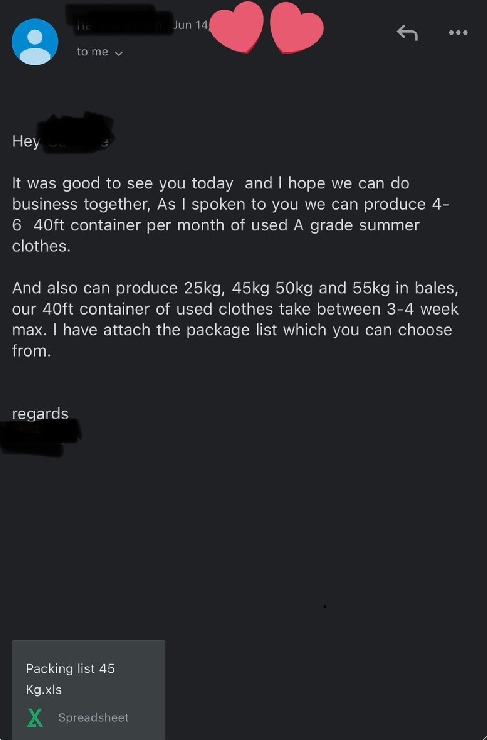

To add to the policy discourse:
While the Mitumba sector (like the transport sector) need overhauling, they are also massive industries, providing livelihoods to millions of stakeholders.
Policymakers must remember this, and ensure transitions are as orderly as possible.💕
As always, it bears mentioning.
NO, I have not been paid by any politician😤.
I am a skilled policy expert. I am Kenyan.
I hold well-considered opinions (most times).
And…🥁🥁🥁
I WENT TO ALLIANCE 😂😂😂
(Haki pole LOL. Sitarudia)
I see people asking me “Kwani how many things have you tried?”
Ile kitu nimebakisha ni kuuza muguka beloved 😂😂😂. You owe yourself effort in life.
Take a chance at opportunities that interest and excite you. If you fail, fine. If it works, GREAT.
But, TRY. 💕
LOL. It’s hilarious how one of y’alls key takeaways is chest pains over P*rnhub sheets 😂😂
😂.
I’m sure you all know this, but you should ALWAYS wash and disinfect your Mitumba clothes.
New clothes too.
They are all very unsanitary.
Found these archives of when Kenya spent 50M trying to have a ‘National Dress’ and Kenyans basically told the designers to go hukoooo with their cloaks 😂😭.
Fun fact I just learned : RAO and Koigi were once thrown out of parliament for wearing African attire? That sucks 😰😱
